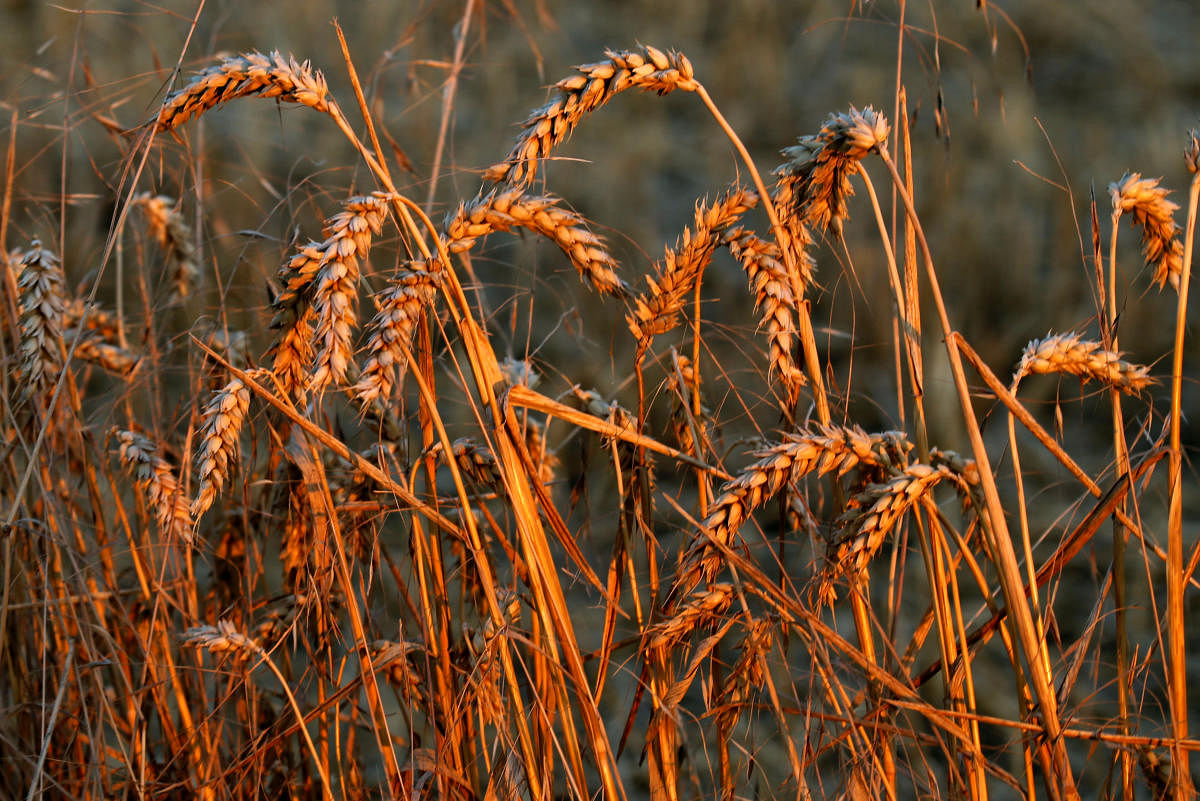
Eighteen Indian scientists play a crucial role in cracking the genetic code of wheat – the world's most widely cultivated crop.
The genetic information, scientists say, would help Indian plant breeders create better wheat varieties capable of tolerating heat and drought without compromising the yield.
This comes four years after International Wheat Genome Sequencing Consortium with 2,400 members in 68 countries published the first draft of the genome sequencing.
Researchers from Punjab Agricultural University, Ludhiana, Delhi University South Campus and Indian Council of Agriculture Research's National Research Centre on Plant Biotechnology are part of the international consortium.
“In the draft sequence, only 60% of the genome was covered. Also, it was a floating sequence as genes were not attributed to specific chromosomes. The work is now complete with 95% coverage area besides having the precise location of 107,891 genes and of more than 4 million molecular markers,” ICAR national professor N K Singh, a key member of the team, told DH.
Singh and his colleague at the ICAR research centre and Delhi University were also a part of another global effort to map the rice genome that culminated in 2005 with the publication of the rice genome map. “But wheat is far more complex and the genome size is 40 times larger than rice,” he observed.
India's responsibility was to map Chromosome-2A.
Sequencing the bread wheat genome was long considered an impossible task, due to its enormous size, five times larger than the human genome, and complexity — bread wheat has three sub-genomes and more than 85% of the genome is composed of repeated elements.
“The publication of the wheat reference genome is the culmination of the work of many individuals who came together under the banner of the IWGSC to do what was considered impossible,” explained Kellye Eversole, executive director of the IWGSC.
“The method of producing the reference sequence and the principles and policies of the consortium provide a model for sequencing large, complex plant genomes.”
The genetic information, Singh said, would aid to develop wheat varieties that are capable of tolerating heat stress without lowering the yield. With increased ambient temperature, one of the major challenges before Indian wheat scientists is to find out varieties that will not lower its productivity despite a temperature rise of 1-2 degrees Celsius in March.
“A decade after the rice genome map was made public, Indian researchers created at least 20 new rice lines using the genetic information and more varieties are in the pipeline. We expect the same with wheat,” Singh said.
“Cracking of the bread wheat genome will go a long way in developing climate-resilient wheat and help tide over the possible impact of climate change on farm output,” said Union Science Minister Harsh Vardhan.
The project that began in 2010 was supported by the Department of Biotechnology.
The Wheat Genome Sequence was published in the August 17 issue of the journal Science. On the same date of six additional publications describing and using the reference sequence resource, appeared in the same issue of Science, Science Advances and Genome Biology.
A key crop for food security, wheat is the staple food of more than a third of the global human population and accounts for almost 20% of the total calories and protein consumed by humans worldwide, more than any other single food source. It also serves as an important source of vitamins and minerals.
To meet the future demands of a projected world population of 9.6 billion by 2050, wheat productivity needs to increase by 1.6% each year. In order to preserve biodiversity, water, and nutrient resources, the majority of this increase has to be achieved via crop and trait improvement on land currently cultivated rather than committing new land to cultivation.
